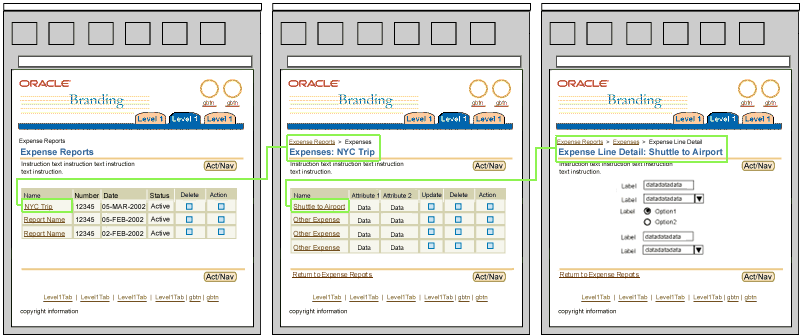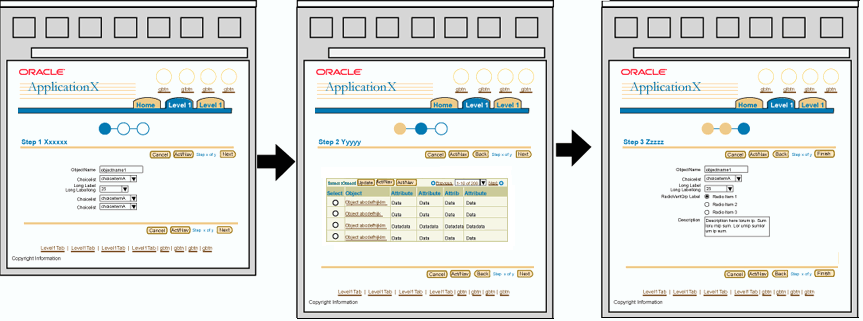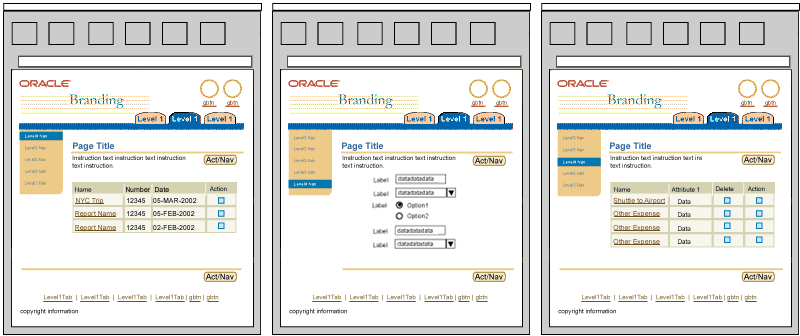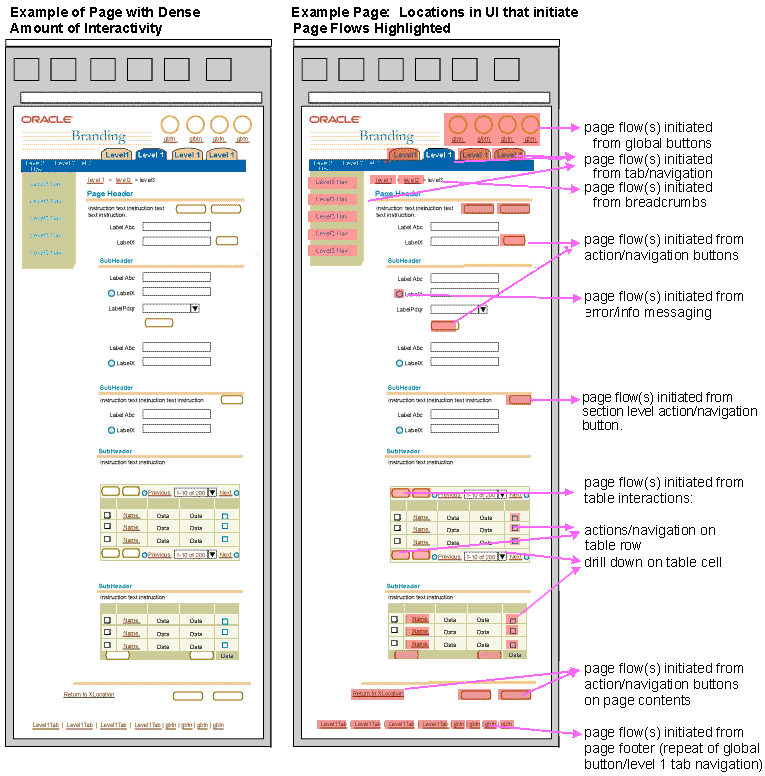Introduction to BLAF Page Flows
Last Updated 04.19.02
General Description
A page flow is a combination of page templates with
content that form a common flow. A page flow can also be thought of as
a recipe of page templates with customizable aspects based on applications'
detailed functionality needs. The following guideline describes
Guideline Attributes
Spec Version # - 3.1
Spec Contributors - Betsy Nute
UI Models - all models
Example Products - all products
Related Guidelines - Introduction
to BLAF Page Templates, Introduction
to BLAF Guidelines
- In most cases, a user is returned to the page that launched a flow when finished. For instance, a user selects a budget to reallocate. He/She
then drillsdown to a page or launches a linear flow to reallocate the budget. When finished, he/she applies the changes and returns
the budget list where the flow was initiated.
- BLAF Page Flows use persistant UI components throughout a flow to let the user know where he/she is during the process. Some of these
components are referred to as "Locator Elements". For example, Breadcrumbs denote the path that a user is taken when drilling
down through layers of content in the application hierarchy. The Train component is used to denote the steps in a linear process. Other similar
"markers" for users to denote where they are in the application hierarchy are the page title and the tab/navigation elements present on
all pages in a flow.
Most flows throughout BLAF can be abstracted to one of the following common flows; drilldown page flow, linear
page flow, non-linear page flow, and exploratory flow. Below describes each type of flow, signifying BLAF components
used in the flow, and example.
Drilldown Page Flow
- Definition - a drilldown page flow is characterized by an incremental disclosure of information as pages in the flow are traversed.
- Signifying Components - Breadcrumbs, Concatenation in Page Title, Contextual Information.
- Example - Drill down from an Object List Template to an Object Template to Line Details of the object.

Linear Page Flow
- Definition - a linear page flow is characterized
by each page having one or more dependencies on the previous page
and following a prescribed order to the next page.
It is recommended that a linear page flow concludes
with the same page on which it began.
- Signifying Components - Train.
- Example - Step by Step Object Template to Update and Object Properties with Dependencies

Non-Linear Page Flow
- Definition - a non-linear page flow is characterized
as a set of pages that share a particular context but have no dependencies
or prescribed order of traversal.
- Signifying Components - Side Navigation, SubTabs.
- Example - Object Template with Multiple Properties (non-dependent) in Side Navigation

Exploratory Page Flow
- Definition - an exploratory page flow is
characterized as a set of pages that share no particular context and
have no dependencies or prescribed order of traversal.
- Signifying Components - Many apply.
- Example - exploratory page
flows may be initiated by the following:
- a portal page with links to specific application home pages
- an application home page with links to specific detail pages
Since common functionality and requirements exist across all products and divisions within Oracle, the BLAF guidelines
prescribe flows with similar context to be the same for consistency in user experience. For example, search
flows should be consistent across applications to ensure ease of use and easy transfer of training between
performing functions in multiple applications.
Example of Page Flows with Common Context Across Oracle eBusiness Suite
 Home Page
Object List Page
Object Template Page
Home Page
Object List Page
Object Template Page
Visual Specifications
See list of individual flow guidelines BLAF
Table of Contents
Open/Closed Issues
Open Issues
none
Closed Issues
none






